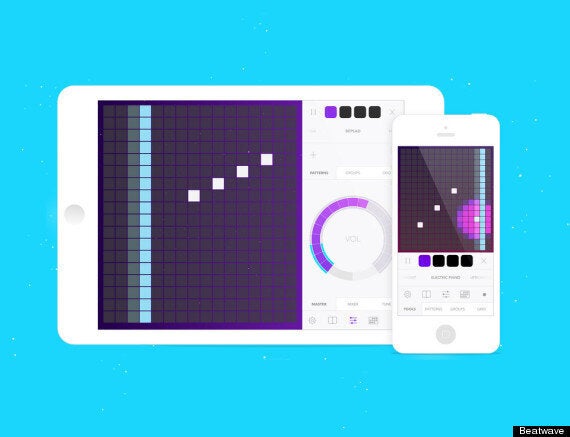It used to be that aspiring musicians had to gather the courage to walk into a guitar store, find some friends and play into a crappy tape recorder if they wanted to even entertain the idea of making their own music.
Now it's different. The world -- or rather the Apple App Store -- is full to the brim with music making apps and games which promise the ability to not only make music, but to make it quickly and with no experience, and then gather an army of fans online in less time than it took Paul McCartney to plug in his bass guitar.
The latest such app to be storming the App Store charts is the newly re-released Beatwave.
'Beatwave Pro 2' is a completely redesigned version of the popular grid-based sequencer and music app, which lets you draw simple patterns and build them up in complexity. Using metaphors like layers, effects and instruments, the app is both straightforward and hypnotically complex.
So how true is the claim? Can you really make great music in an hour? And if you could, would you share it with the readership of a major tech website and bare your soul for all to see?
Let's find out!

Part 1: Basic Tutorial and Getting Started
Beatwave is simple enough to use, even on the smaller screen of the iPhone which we used to make our creation. You simply draw on the 16 x 16 grid and watch as the pulse moves from left to right, and plays a sound at each pixel you fill in. Pixels at the top sound higher, those right at the bottom are drums.
You're able to set your tempo and key before you start, and each of the notes is in tune -- so it's impossible to play a wrong note.
Underneath this grid you have a flickable row of 10 instruments, which you can expand with in-app purchases to more than 200 different individual sounds. They include bass, drums, lead instruments and anything in between. There are also effects which you can apply to patterns or layers (up to four at once) meaning it should be very difficult to make the same song twice by accident.
Another wrinkle -- and possible cause for confusion -- comes when you stop making basic patterns, and look to combine them together for more complex arrangements or songs.
From the pattern menu you can select the + button to save the currently playing pattern. You can then load that tune into a different layer by tapping on the pattern. These patterns can then be queued to play at the start of the bar by tapping the clock.
Once you're happy with your four layers, you can save that tune to a 'Group'. These groups can then be structured and queued, meaning you can switch from choruses to verses. You can also reorder them to build up longer songs.
It's a little complex at first, but the app has some good tutorials built-in too.

Part 2: Making Our First Masterpiece
For our first tune we decided to keep things simple, and aimed to write a little ditty in the key of G. Because we're a tech publication, it seemed appropriate to use mainly the instruments from the In-App Purchase 'Chiptunes' pack, and a less-than-energetic 108 BPM.
With that aural texture ('lazy nu-nerd post-metal chipbeat') in mind, we selected our line-up of instruments for our first four-layer pattern. We went with 'Sad Robot', 'Bitcrusher', 'Alex Kidd' and 'Glitch Kit', mainly based on the names alone -- following the tradition of all the kids that buy Fender Strats for exactly that reason. Then we set to work, swiping huge amounts of notes and tunes across the screen in a near random order. The result? A total mess. Obviously.
We tried again. With a bit more refinement (deleting everything and starting again) we ended up with a tune that roughly comprises the type of thing that might be mildly annoying in a video game, and would be largely unlistenable in any real non-pixellated non-mute world, such as, for instance, the one in which we live.
From here, we forged on. With half an hour to go we resolved to put together one of the most hastily assembled, ill conceived but hopefully illustrative albums of all time.
This is the result. We named our band 'Kabuto Kidd' after one of the bosses from the classic Sega game, 'Alex Kidd In The Miracle World', because we made an album in an hour, so that's our right, so there.
What did we learn? Well we obviously learned a ton about using the app -- and about the rich music possible if you spend more time with it than we did, or you happen to be (even more) talented than us. We also learned the value of a good Bitcrusher, that the £6.99 IAP for Beatwave is really, really good value, and that Soundcloud makes it way too easy to start bands these days.
We also found that on the iPhone Beatwave is fun -- but it's on the iPad where it really shines. Fiddly bass lines do not great albums make, it turns out.
Enjoy, and send us your own intrepid examples!